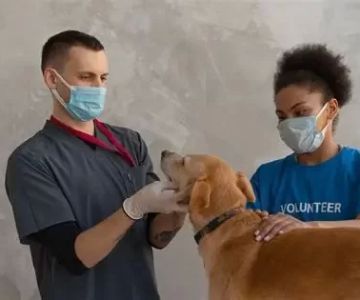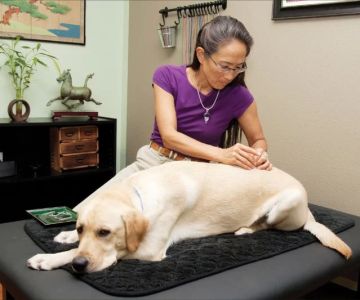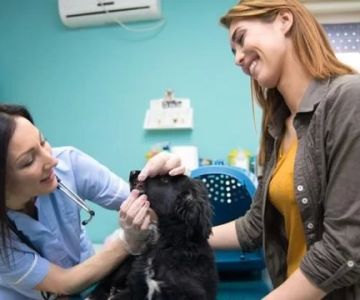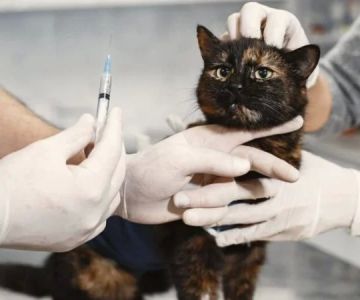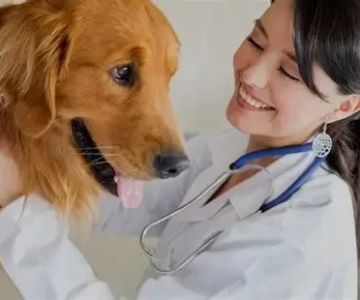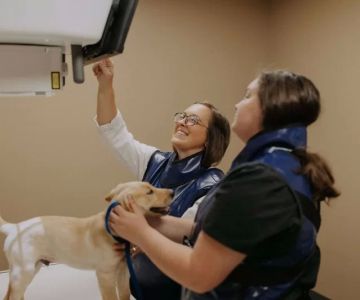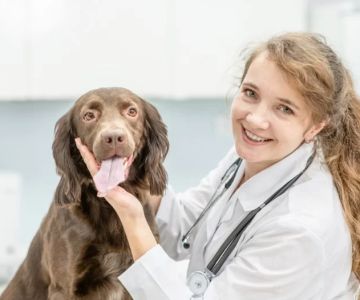How Much Does a Veterinary Radiologist Make? Exploring the Salary and Career Opportunities
Veterinary radiology is one of the most specialized and important fields in veterinary medicine. As someone who has spent years in the veterinary field, I can attest to how essential radiologists are in diagnosing and treating animals. But if you’re considering a career in veterinary radiology or just curious about the earning potential, you may be wondering: how much does a veterinary radiologist make? In this article, we’ll dive into the salary expectations for veterinary radiologists, factors that influence their earnings, and the path to building a rewarding career in this niche field.
- Veterinary Radiology Salary Overview
- Factors Affecting a Veterinary Radiologist's Salary
- Educational Requirements for Veterinary Radiologists
- Career Opportunities in Veterinary Radiology
- Personal Insights: My Experience with Veterinary Radiologists
- How to Become a Veterinary Radiologist
1. Veterinary Radiology Salary Overview
Veterinary radiologists play a crucial role in diagnosing conditions in animals by using imaging techniques like X-rays, CT scans, and MRIs. Due to the high level of expertise required in this field, the salary of a veterinary radiologist tends to be on the higher end of the veterinary salary spectrum. As of recent data, the average salary for a veterinary radiologist in the United States ranges from $100,000 to $180,000 per year, with some experienced professionals earning more depending on location and years of experience.
It’s important to note that veterinary radiologists working in private practices may earn a different salary compared to those employed by larger hospitals, research institutions, or universities. For instance, veterinary radiologists working in academic or research settings may receive additional compensation for their teaching responsibilities or involvement in cutting-edge research, which can influence their overall salary.
2. Factors Affecting a Veterinary Radiologist's Salary
The salary of a veterinary radiologist isn’t set in stone; there are a number of factors that can influence how much they earn. From my experience in the veterinary field, here are a few key factors that can impact a veterinary radiologist’s salary:
- Location: Where you work plays a significant role in determining your salary. Veterinary radiologists in major metropolitan areas or regions with a higher cost of living tend to earn more compared to those in rural areas. For example, radiologists in cities like New York or Los Angeles may expect higher salaries to compensate for the increased cost of living.
- Experience and Education: Like many other fields, experience matters. A veterinary radiologist who has been practicing for 10+ years will likely earn more than someone just starting in the field. Additionally, completing specialized certifications or training in advanced imaging techniques can make you more marketable and could lead to higher pay.
- Type of Practice or Employment: Working in private practice, large animal clinics, or as part of a teaching hospital can lead to different salary outcomes. Private practices might offer a different salary structure, sometimes tied to revenue generation, whereas academic institutions might offer a more stable, but possibly lower, salary with additional benefits like research opportunities.
- Specializations: Some veterinary radiologists specialize in specific imaging techniques such as MRI or ultrasound, which could command a premium salary. The more specialized your skills are, the more in demand you may be, and this can translate to higher wages.
3. Educational Requirements for Veterinary Radiologists
Becoming a veterinary radiologist requires a solid educational foundation. To enter this field, you must first complete a Doctor of Veterinary Medicine (DVM) degree from an accredited veterinary school, which generally takes four years. This is just the first step toward becoming a veterinary radiologist. During veterinary school, aspiring radiologists should focus on subjects related to diagnostic imaging, anatomy, and pathology, as well as gaining hands-on experience in veterinary clinics.
After obtaining a DVM, the next step is pursuing a residency in veterinary radiology, which typically lasts around three to four years. This residency is essential for obtaining the necessary training and hands-on experience in diagnostic imaging techniques. At the end of the residency program, veterinary radiologists must pass board certification exams through the American College of Veterinary Radiology (ACVR), which is crucial for practicing as a specialist in this field.

393 Woods Lake Rd, Greenville, SC 29607, USA
See Details4. Career Opportunities in Veterinary Radiology
The career opportunities for veterinary radiologists are vast and diverse. After obtaining the necessary certification, veterinary radiologists can work in various settings, including:
- Private Practice: Many veterinary radiologists work in private veterinary clinics or animal hospitals, where they perform imaging procedures to assist with the diagnosis of various conditions.
- Academic Institutions: Veterinarians with a passion for teaching may choose to work in academic settings, where they can teach future veterinary students while also conducting research in diagnostic imaging.
- Research and Development: Some veterinary radiologists work in research institutions, helping to develop new imaging technologies or studying the application of imaging techniques in veterinary medicine.
- Specialized Animal Clinics: Veterinary radiologists may work in clinics that specialize in certain types of animals, such as exotic pets, horses, or wildlife, offering diagnostic imaging for those specific species.
In addition to these traditional roles, veterinary radiologists are also highly sought after in the field of telemedicine, where they can provide diagnostic services remotely for veterinary practices across the country. This expanding field is opening up new opportunities for veterinarians who specialize in radiology.
5. Personal Insights: My Experience with Veterinary Radiologists
In my own experience, I’ve had the opportunity to collaborate with veterinary radiologists on a variety of cases. One case that stands out is when I worked with a veterinary radiologist to diagnose a cat with a complex abdominal issue. Using advanced imaging techniques like CT scans, we were able to pinpoint the problem quickly and accurately, allowing the pet to receive timely treatment. The knowledge and skill of the radiologist made all the difference in the successful outcome of the case.
This experience showed me how crucial veterinary radiologists are in the diagnostic process. Their expertise not only saves animals’ lives but also enhances the quality of care they receive. For anyone considering a career in veterinary radiology, I can say firsthand that this is a deeply rewarding field, both intellectually and emotionally, as it offers the chance to make a significant impact on animal health.
6. How to Become a Veterinary Radiologist
Becoming a veterinary radiologist requires years of hard work and dedication, but the rewards are significant. If you're interested in pursuing a career in veterinary radiology, start by obtaining your DVM from an accredited veterinary school. Then, apply for a residency program in veterinary radiology, where you’ll gain hands-on experience with the latest imaging technologies. After completing your residency and passing the ACVR certification exams, you’ll be officially recognized as a veterinary radiologist, opening up many career opportunities in the field.
If you’re serious about pursuing this rewarding career path and want to learn more, I recommend exploring educational resources and veterinary radiology programs that can help guide you through the process. A veterinary radiologist's salary is highly rewarding, and the job satisfaction that comes with making a real difference in animal healthcare is worth the effort.
If you’re looking for more information or are ready to dive deeper into veterinary radiology, check out Scent Snob for the latest resources and advice on veterinary careers and educational programs.


